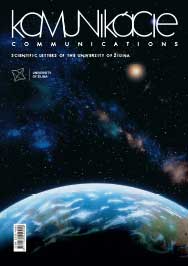Observation of Dynamic Processes on Cutting Zone when Machining Nickel Alloys
Observation of Dynamic Processes on Cutting Zone when Machining Nickel Alloys
Author(s): Andrej Czan, Michal Sajgalik, Anton Martikan, Jozef MrazikSubject(s): Methodology and research technology
Published by: Žilinská univerzita v Žilině
Keywords: Nickel alloys; cutting zone; multifunction measuring system; high-speed imaging; infrared thermography;
Summary/Abstract: Process models of super alloys and included finite element modelling simulations are important for optimizing the metal cutting process, allowing industry to make parts faster, better, and at less cost. Innovative measurement methods of the process can be used to improve and verify the accuracy of these models. With these methods, there are many sources of error when using empirical or exact methods such as infrared radiation thermography to measure the temperature distribution of the tool, workpiece, and chip during metal cutting. Furthermore, metal cutting presents unique measurement challenges due to factors such as the high magnification required, high surface speeds and deformations, micro-blackbody effects, changing emissivity, and primary, secondary and tertiary deformations. As part of an ongoing effort to improve our understanding of the uncertainties associated with these measurement methods, multi-measurement sets of experiments were performed. One set explored how accurately the surface temperature of the cutting tool reflects the internal temperature. This was accomplished by measuring the temperature using a thermal camera in the cutting zone. The second set provided high-speed scanning of dynamic processes such as formation of elastic and plastic deformation. For this measurement, a high-speed scanning system was applied, with a macro conversion lens for monitoring micro-structural changes in deformation areas. The next set applied was necessary for recording dynamic processes by the implementation of a piezoelectric measurement device for monitoring cutting forces. The outputs from this multi-measuring system are the basis for verification of theoretical knowledge from this field and elimination of the uncertainties that arise with computational simulation systems.
Journal: Komunikácie - vedecké listy Žilinskej univerzity v Žiline
- Issue Year: 16/2014
- Issue No: 3A
- Page Range: 161-168
- Page Count: 8
- Language: English

